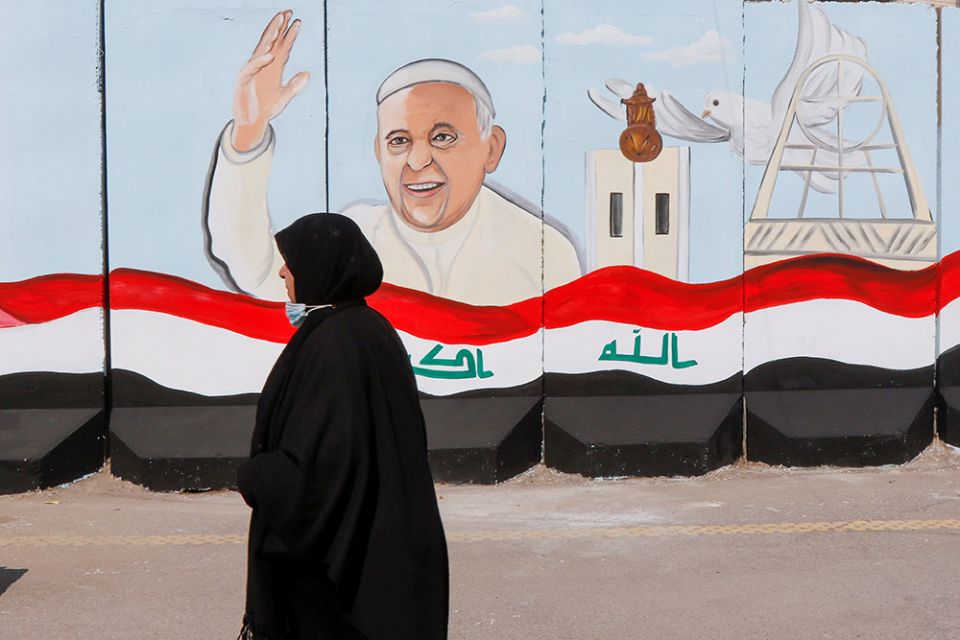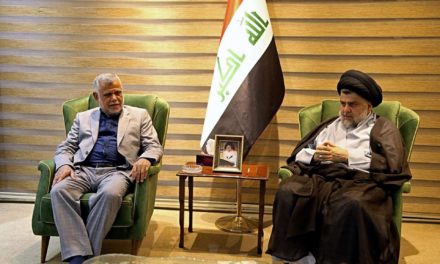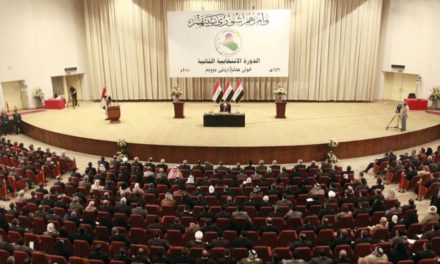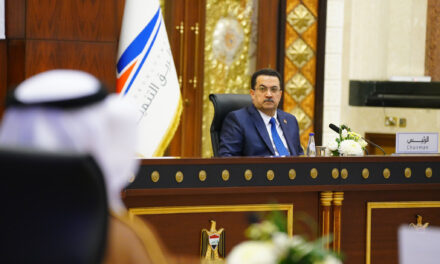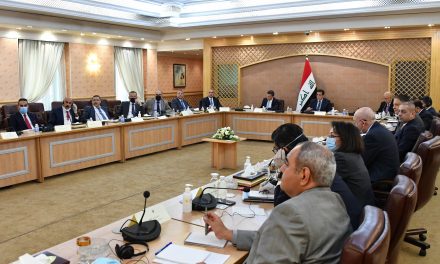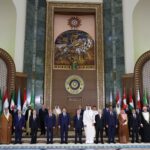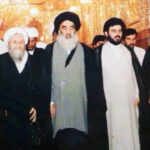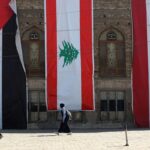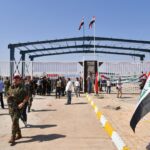(Photo: Khalid Al-Mousily/Reuters)
On March 6, Pope Francis will have paid a courtesy visit to Grand Ayatollah Ali Al-Sistani, the head of the Shi’a religious establishment of Iraq and the spiritual leader for millions of Shi’a Muslims throughout the world. The visit is one of many stops in the Pope’s packed schedule, but it has captured popular imagination, being the first of its kind and raising questions about what it means for the future of Shi’a involvement in global interfaith collaboration. Less discussed, but perhaps more critical and foundational, is the question of whether this is a visit to Grand Ayatollah Sistani or to the religious establishment in Najaf, otherwise known as the Hawza? In other words, does the world view the Hawza as an institution, like the Vatican, or as an individual personified by Grand Ayatollah Sistani? The answer to this question will determine how the world will approach the Shi’a religious establishment in the future, when Grand Ayatollah Sistani is no longer at the helm. It will also determine whether the gains that this visit is said to achieve – from the recognition of Najaf’s centrality to its role in global interfaith collaboration – are durable.
In some narratives, and perhaps as a means to grasp the Hawza’s complicated structure and nature, it has been likened to the Catholic Church. These comparisons stem from the visibly hierarchical structure of the Hawza, which has historically allowed it to assume a leadership role in politics. In reality, the two institutions differ widely, where the Catholic Church is highly bureaucratized and standardized, the religious establishment of Najaf is less institutionalized, and even its hierarchy is based, to an extent, on more fluid and contested understandings of clerical authority. Regardless, these comparisons make the symbolism of the Pope and the Grand Ayatollah’s meeting all the more powerful.
Najaf’s place as the center of Shi’ism needs no cementing, it is the burial site of one of Shi’ism’s most revered historical figures and the home of centuries-old religious seminaries that have trained prominent clerics from the likes of Iran’s late Grand Ayatollah Ruhollah Khomeini to Lebanon’s late Grand Ayatollah Mohamad Hussein Fadlallah. Despite this prominence, the Shi’a religious establishment has historically been unable to assume its role in global interfaith networks, given the pressures of living under a sectarian and authoritarian state. After 2003, and with the toppling of the Ba’athist dictatorship, the religious establishment was granted the space to assume a larger role.
As political events unraveled in Iraq in the aftermath of the U.S. led invasion, Grand Ayatollah Sistani was looked to for guidance in navigating this unchartered terrain. His leadership was demanded and tested during particular moments in contemporary Iraqi history. Most recently, Grand Ayatollah Sistani played a key role in maneuvering Iraq towards stability during the 2019 October Protests, when his representatives delivered messages that carefully toed the line between citizens’ rights and the sanctity of the constitution and the electoral system. The Grand Ayatollah’s involvement in politics has generally garnered praise from a diverse array of people ranging from opinion writers (“A Nobel for Sistani” in The New York Times) to academics (Patriotic Ayatollahs by Caroleen Sayej). Despite this deserved praise, it remains hard to analytically untangle whether it is the person of Sistani or the institution of the Hawza that has navigated Iraq through these crises.
A systematic review of the Hawza’s history of political involvement suggests that the institution’s importance is under-appreciated. In my research on the involvement of elite clerics in anti-government protests throughout Iraqi history, I find that the clerical establishment reacted in much the same way regardless of whether protestors were protesting a colonial, totalitarian, or democratizing state. In every situation it was confronted with, the Hawza prioritized the maintenance of law, order and stability. In different time periods and under the leadership of different Grand Ayatollahs, the Hawza viewed itself as a guardian of society and a safety valve during crises.
Moreover, the social structure of the Najafi Hawza, the rigorous academic training it imposes, as well as the personal demands it places on its students socializes its members into a specific mold. By the time they are ready to assume leadership positions in the Hawza, most clerics have adopted a particular perspective that prioritizes social and economic stability. In my interviews with elite clerics who are the likely inheritors of the religious establishment, I was struck by the uniformity of both their political views and their presentation of them.
The history of the Najaf Hawza as well as the rhetoric deployed by contemporary clerics suggests that Grand Ayatollah Sistani is not an outlier amongst Najafi clerics. In his measured interference, Grand Ayatollah Sistani typifies the average elite cleric produced in Najaf. There is no reason to believe that if an equally qualified and trained colleague of his was in his position, the course of Iraqi history would have progressed differently. More importantly, there is also no reason to believe that his successor will differ widely in views or disposition from him. The Hawza, in socializing clerics, is self-preservationist.
Whether this view of the religious establishment is shared by the international community is unclear, but perhaps can be revealed by the commentary that will emerge following the Pope’s historic visit. What is clear, however, is that this is the view that many Iraqis hold. In a recent speech at the Brookings Institution, President Barham Salih stated that “as a Kurd, I don’t see Najaf as just a Shi’a issue, Najaf has historically spoken for Kurdish rights.” President Salih was likely referring to a religious edict, declared by one of Grand Ayatollah Sistani’s predecessors, Grand Ayatollah Muhsin Al-Hakim in 1966, which forbade killing Kurds at a time during which a former Iraqi President wanted to carry out attacks against them. Indeed, this sentiment has been repeated by members of Iraq’s other ethnic and religious groups. Grand Ayatollah Al-Hakim also issued a religious edict for the protection of indigenous Christians who were being persecuted in Northern Iraq in the 1960s as well. This suggests, that from the perspective of Iraqis, it is the institution of the Hawza and not necessarily the individual of the Grand Ayatollah which are critical.
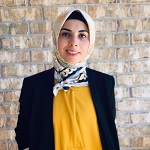
Marsin Alshamary
Marsin Alshamary is a post-doctoral fellow at the Brookings Institution and a non-resident fellow at the Institute of Regional & International Studies. She holds a Ph.D. from MIT in political science.

